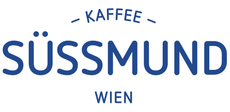As a coffee roaster with high standards, we develop a unique roasting profile for each coffee variety, bringing out the qualities of the respective green coffee. Filter coffees are generally roasted for a shorter time than espresso beans. Furthermore, the final temperature is lower, and the development time (beginning at the first crack) represents a smaller proportion of the total roasting time. This results in the coffee beans being lighter in color than dark espresso beans and exhibiting less roasted aroma. Especially with filter coffee, the roasted aroma tends to be distracting, as it would overpower the delicate sweetness and complex acidity in filter coffee. Therefore, the filter coffee varieties are categorized as "Fruity & Complex" and "Balanced & Sweet." With the right roast, the growing region and processing method can be tasted.
While we recommend light roasts for filter coffee, there's nothing wrong with preparing an espresso roast as a filter coffee. The more intense roasted aroma makes the coffee more intense. However, the caffeine content doesn't change depending on the roast profile; the variety and preparation alone determine the coffee's caffeine content. Conversely, a filter coffee roast can also be prepared as an espresso. The light roast tastes fruitier as an espresso, with intense acidity, but less roasted aroma than an espresso roast.
Filter coffee brewing is particularly well-suited to experimenting with different roast profiles, grind sizes, water temperatures, brewing ratios (water:coffee), and pouring techniques. Since brewing time is one of the key factors for good taste, you should always grind the coffee fresh using your own coffee grinder. This is the only way to have absolute control over the extraction.


